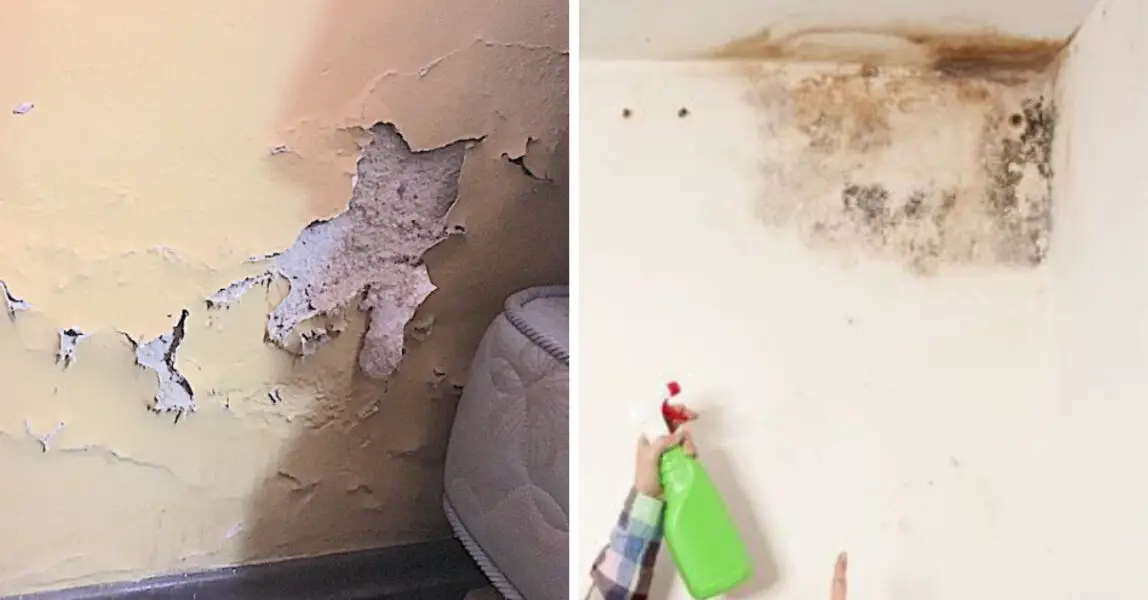How to remove moisture from walls so it never comes back
Surely the humidity and mold on the walls of the house will have affected us at some point in our lives, however we may think that it is not so serious that this invades a certain environment of our home. But far from thinking like that, each case is different and must be evaluated individually by a professional.
Keep in mind that most houses are built with a foundation structure that is in direct contact with the ground, so moisture is always present. It happens that over time, masonry walls absorb the moisture that rises through the walls forming mold. Therefore, we always recommend consulting with a construction professional to verify that it is not a structural problem (that also rules out a water loss in a pipe, for example).

Generally when we observe the problem on the walls, we act immediately with cleaning and painting to leave it as good as new. However, the reality is that over the months and years, humidity returns, ruining the rooms of the house.
Below we will observe a series of practical recommendations for the definitive solution to this problem:
Index
Talc to remove moisture
Although it may seem strange, talcum powder is undoubtedly a faithful ally when it comes to combating humidity. Think about how a little talcum powder removes moisture from your sneakers or shoes, as it can also help fight mold on the walls.
To do this, you simply have to sprinkle the talcum powder on the wall and then with a cloth scrub it so that it penetrates.
Repeat the process several times to make it more effective until all traces of moisture are removed.
Remove mold with bleach
In this case the solution is palliative, because with this method the mold will be completely eliminated but the humidity will continue inside the walls.
- We start by mixing one part bleach with one part water, then add it in a spray bottle, we also make sure to use rubber gloves, goggles and a mask. Finally, we take a brush, spray and scrub vigorously.
- We must be patient because it will take time, you have to do it a little every day or weeks, because the smell is very strong and can even cause dizziness. Another measure we should take is to do this without other people around, and in a very airy environment.
- An important recommendation, if we use bleach with chlorine on colored walls, it will fade. Therefore, it is a tip especially for walls and white surfaces.
Remove mold with hydrogen peroxide
Another product alternative that can help remove mold is hydrogen peroxide, but it’s best to use it on smaller stains, as it requires a little more work.
- Simply soak a cloth with hydrogen peroxide, apply to the mold to wet and leave it on for 15 minutes. Then rub well until it comes out.
- This product also requires you to wear gloves and a protective mask and to be careful to ventilate the environment.
- Do not allow children to access the room during the procedure.
Remove mold with water, vinegar, and alcohol
For a more homemade mix that won’t discolor the color on the wall, there’s a simpler method.
- You can mix warm water with 1 cup of vinegar and 1 cup of alcohol. Together and well mixed, they will soften the mold, remove the stain and promote cleanliness.
Removes moisture by correcting the structure
If we want to get rid of moisture and mold in the house for good, it will be necessary to look for other solutions. For this, it is essential to have the advice of a professional, who will evaluate the structure of the house and help us determine the best solution.
- Once the cause is determined, the solution will come, generally consisting of removing the current cast and redoing it. In this case, a waterproofing liquid will be used in the mixture of the new plaster.
- In some cases, if the problem comes from below, it may be necessary to break the first meter of wall and redo that part with the addition of a waterproofing carpet.
- There is no reason to break the entire wall, only the bottom and little by little. When this part is protected, the upper part will no longer absorb the moisture that comes from the soil.
Other Moisture Removal Methods That Can Also Work
- Sea salt is very good for combating humidity, since it has a function quite similar to baking soda. In addition, it is very easy to use, you are simply going to place containers with sea salt or sea salt on the foot or shelves of the walls and voila, it will begin to absorb all the moisture little by little.
- Baking soda can also be used in the same way as sea salt, simply by placing a few containers near the moisture zone on the walls and you will see results in no time.
- Tea tree oil is also an excellent trick to get rid of moisture on the walls. For this you simply have to mix two tablespoons of this oil with two cups or jícaras, integrating the ingredients well and then apply to the wet areas.
